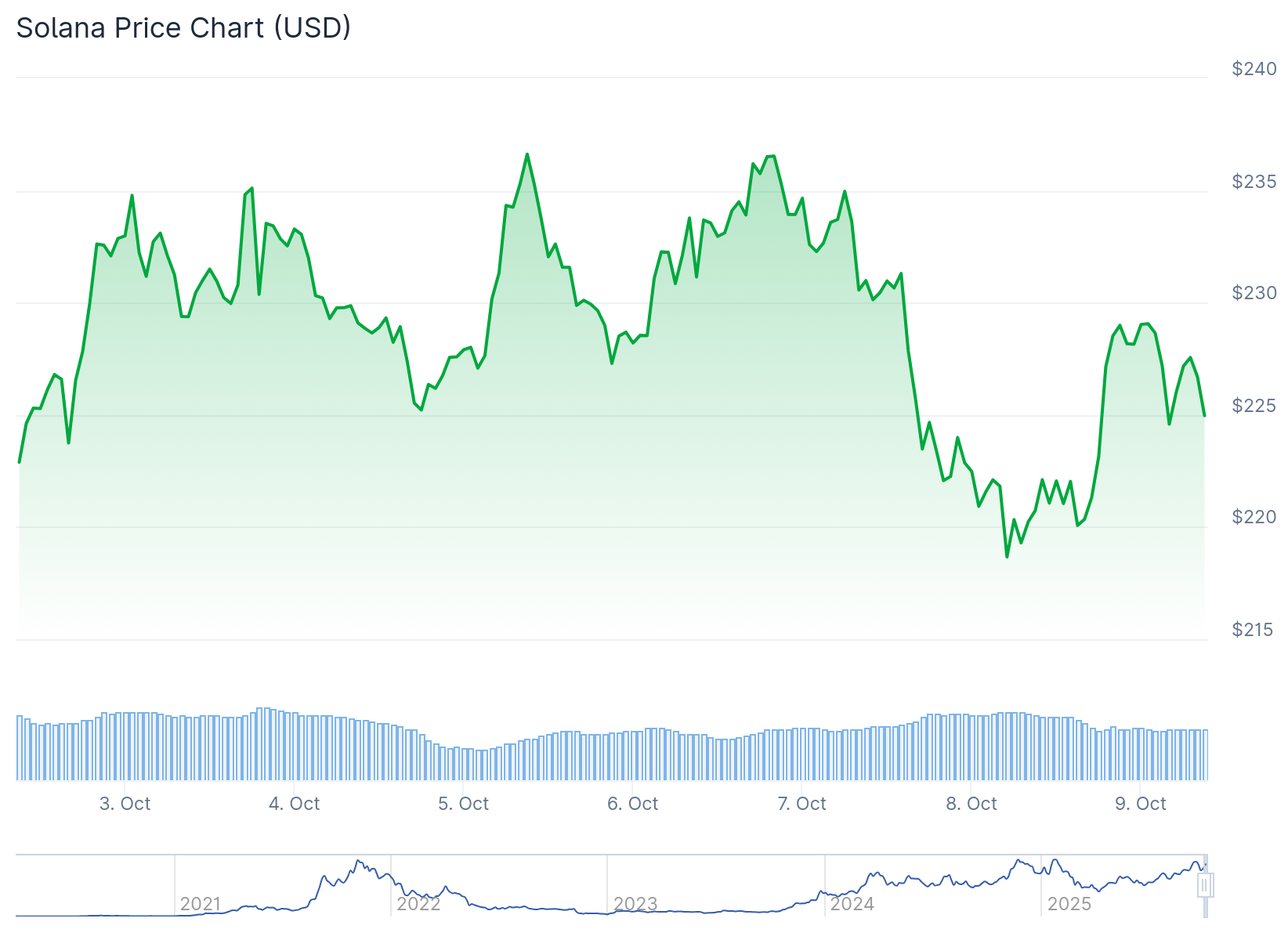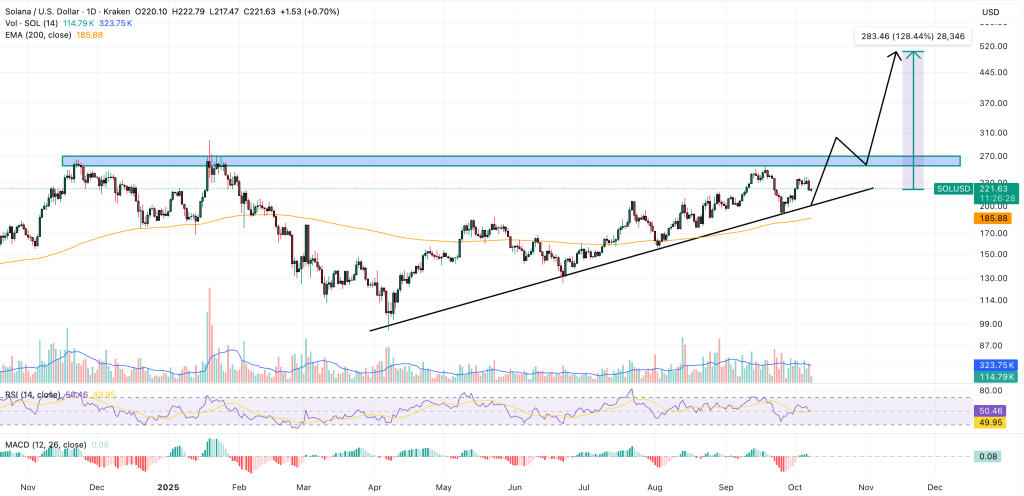TLDR
- Solana (SOL) reached $229 after dipping to $218, with traders watching the $300 level as Federal Reserve rate cut expectations boost market sentiment.
- Institutional demand surged with $706 million in weekly Solana ETF and ETP inflows, far exceeding XRP’s $219 million during the same period.
- Major ETF decisions from Grayscale, Fidelity, Franklin Templeton, and VanEck expected by October 10 with approval probability near 100%.
- Network metrics strengthened as seven-day fees increased 22%, DEX volumes jumped 78% on Pump, and total value locked rose 8% to $14.2 billion.
- Solana’s 30-day DEX volume hit $129 billion, surpassing Ethereum’s $114 billion and maintaining dominance in transaction processing.
Solana’s native token SOL recovered to $229 on Tuesday after a brief dip to $218. The rebound followed the release of Federal Reserve minutes from the September 17 meeting. The minutes reinforced market expectations for additional interest rate cuts in 2025.

The crypto is now positioned for a potential move toward $300. Current derivatives data and onchain metrics support this bullish outlook.
Multiple Solana ETF decisions are scheduled for October 10. Major financial institutions including Grayscale, Fidelity, Franklin Templeton, and VanEck await approval for their spot Solana ETF products. Market analysts place approval probability near 100%.
Institutional interest continues to grow. Solana ETFs and ETPs recorded $706 million in inflows during the week ending September 5. This figure dwarfed XRP’s $219 million for the same timeframe.
The first Solana spot ETF from REX-Osprey launched in July. It became the first SEC-approved product offering built-in staking rewards. The fund has generated over $400 million since inception.
Network Performance Outpaces Competitors
Solana posted a 22% increase in seven-day network fees. The growth came from heightened activity on decentralized exchanges. Ethereum experienced a 21% decline in network revenue over the same period.
DEX activity exploded across the Solana ecosystem. Pump saw volumes rise 78% in seven days. Meteora recorded a 73% increase while Raydium posted 46% growth.
Solana reclaimed the top spot in decentralized exchange activity. The network processed $129 billion in 30-day volume, surpassing Ethereum’s $114 billion. Hyperliquid, a fast-growing competitor, plateaued around $31 billion.
Transaction volume tells an even stronger story. Solana processes more transactions than Ethereum and all its layer-2 solutions combined.
TVL Growth Solidifies Market Position
Total value locked on Solana increased 8% over 30 days to reach $14.2 billion. This represents an 8% share of the total crypto market. The network now holds the second-largest position by TVL.
Individual protocols showed strong growth. Kamino deposits jumped 20%. Both Drift and Orca recorded 12% increases. These figures compare favorably to Ethereum’s 3% TVL growth and Tron’s 6% increase during the same period.
Network fees play a crucial role for blockchains focused on decentralized applications. The revenue helps offset inflationary pressures inherent in most crypto networks. Validator operations cost money and staking participants expect returns. Weak network activity typically leads to selling pressure on native tokens.
Technical Indicators and Market Dynamics
The daily chart shows resistance at $250 from last month. The token appears ready to retest that level as momentum builds.

The Relative Strength Index crossed above its 14-day moving average. Traders often interpret this as a buy signal. The $200 level serves as critical support if prices pull back.
Perpetual futures funding rates stayed below the 6% neutral threshold. This indicates limited demand for leveraged long positions. The cautious approach may stem from competition with other blockchains.
BNB Chain attracted attention recently as several memecoins surged over 150% in seven days. BNB rallied 28% during this period while SOL gained 3%. BNB reached a new all-time high of $1,357 on Tuesday. Mantle hit $2.81 on Wednesday.
Some SOL holders remain frustrated after the failed breakout above $250 on September 18. However, the October 10 ETF decisions could catalyze new institutional capital flows. Approved products would create additional access points for institutional investors seeking Solana exposure.



